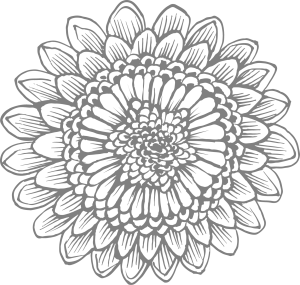VITERBO
The procession with the icon of San Salvatore, placed on a farm cart pulled by oxen, takes place on the Saturday before the second Sunday in May in the historic centre of Viterbo, leaving from and returning to the church of Santa Maria Nuova, where the triptych is kept and venerated. The icon of San Salvatore, according to tradition, was miraculously found by two peasants ploughing a field near Viterbo back in 1283. The city statutes of 1344 contain the rules for the procession (convocation, itinerary, order of participants…), which took place on the evening of the 14th of August.
For a long time, the icon of San Salvatore was carried on a processional car, which was replaced in the last century by a float decorated with floral compositions and preceded by a historical-revival procession with several dozen participants, representing the primitive participation of the medieval Guilds of Arts parading behind their banners.
The procession is the result of lengthy preparation, from the costumes of the participants to the meticulous choice of flowers, with which to prepare the decorations to be placed next to the Blessed Sacrament, as well as festoons and baskets of herbs.
About an hour before the start of the procession, in the square in front of the church of Santa Maria Nuova, where the Holy Icon is kept and venerated, a pair of Maremma oxen are transported and yoked to the cart. The triptych is then hoisted into the centre of the cart. At the appointed time, the procession begins, with the drummers, the historical and evocative procession of the Arts Guilds, the Confraternities, the Clergy, the horsemen on horseback, who recall the art of the “bifolchi” and, last but not least, the cart pulled by oxen driven by two herdsmen.
After passing through the medieval quarter of San Pellegrino, the procession heads towards Piazza del Plebiscito where it stops to receive the greetings and homage of the city’s mayor and the authorities. It then returns to Piazza Santa Maria Nuovo. It then returns to Piazza Santa Maria Nuovo. The triptych of San Salvatore is removed from the cart and taken back to the church, where Holy Mass is celebrated afterwards.

VIDEO
IMAGE GALLERY


VITERBO
The procession with the icon of San Salvatore, placed on a farm cart pulled by oxen, takes place on the Saturday before the second Sunday in May in the historic centre of Viterbo, leaving from and returning to the church of Santa Maria Nuova, where the triptych is kept and venerated. The icon of San Salvatore, according to tradition, was miraculously found by two peasants ploughing a field near Viterbo back in 1283. The city statutes of 1344 contain the rules for the procession (convocation, itinerary, order of participants…), which took place on the evening of the 14th of August.
For a long time, the icon of San Salvatore was carried on a processional car, which was replaced in the last century by a float decorated with floral compositions and preceded by a historical-revival procession with several dozen participants, representing the primitive participation of the medieval Guilds of Arts parading behind their banners.
The procession is the result of lengthy preparation, from the costumes of the participants to the meticulous choice of flowers, with which to prepare the decorations to be placed next to the Blessed Sacrament, as well as festoons and baskets of herbs.
About an hour before the start of the procession, in the square in front of the church of Santa Maria Nuova, where the Holy Icon is kept and venerated, a pair of Maremma oxen are transported and yoked to the cart. The triptych is then hoisted into the centre of the cart. At the appointed time, the procession begins, with the drummers, the historical and evocative procession of the Arts Guilds, the Confraternities, the Clergy, the horsemen on horseback, who recall the art of the “bifolchi” and, last but not least, the cart pulled by oxen driven by two herdsmen.
After passing through the medieval quarter of San Pellegrino, the procession heads towards Piazza del Plebiscito where it stops to receive the greetings and homage of the city’s mayor and the authorities. It then returns to Piazza Santa Maria Nuovo. It then returns to Piazza Santa Maria Nuovo. The triptych of San Salvatore is removed from the cart and taken back to the church, where Holy Mass is celebrated afterwards.
VIDEO
IMAGE GALLERY